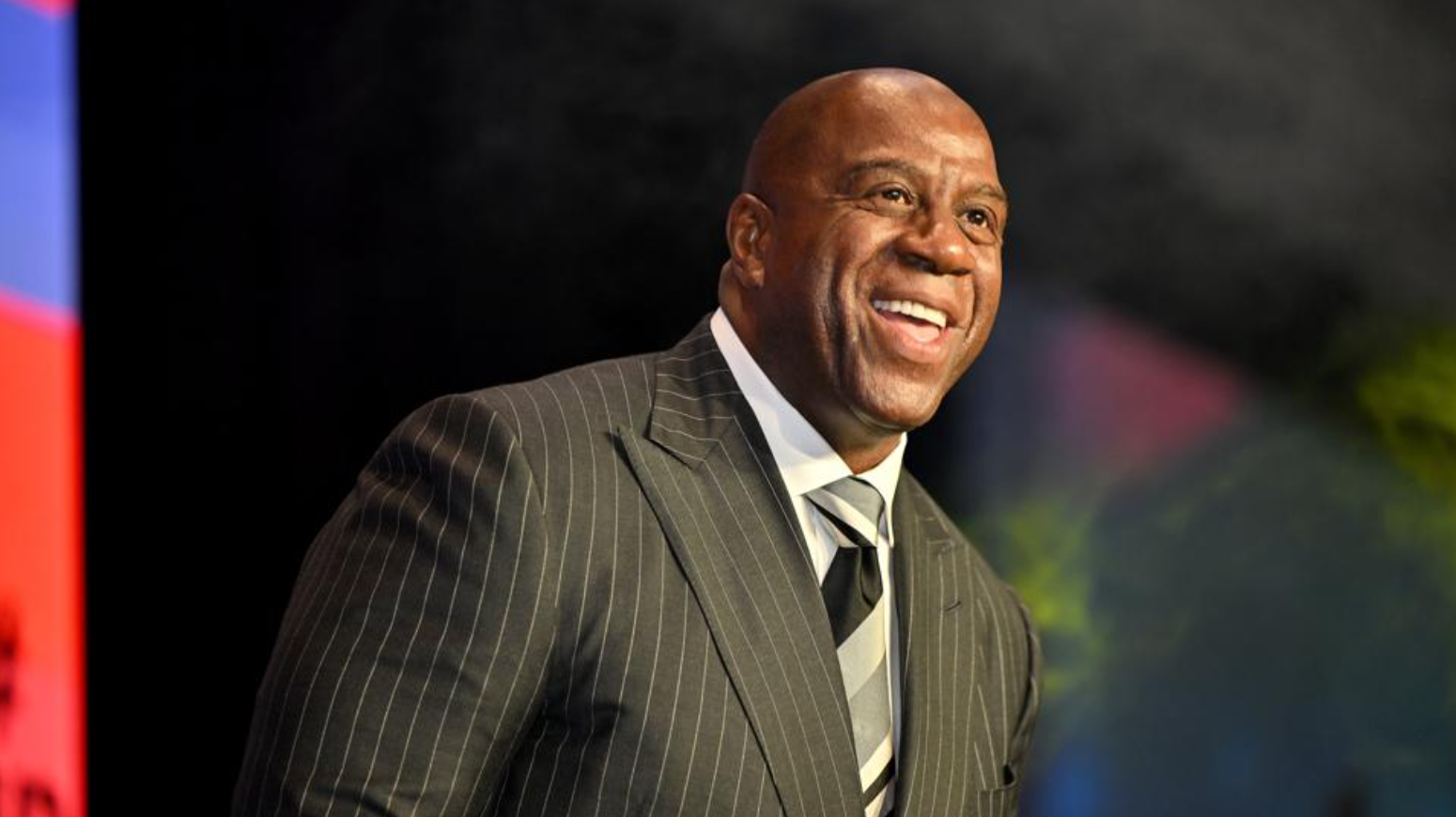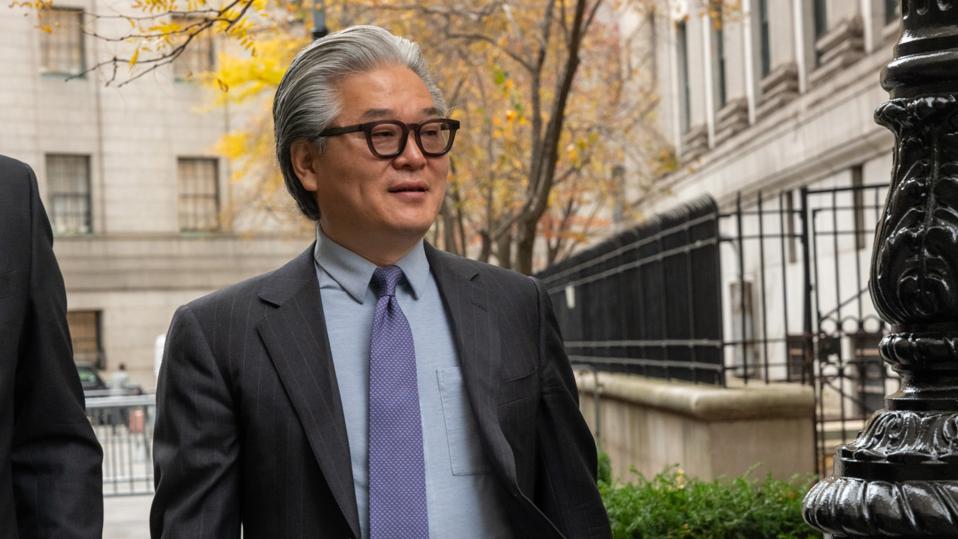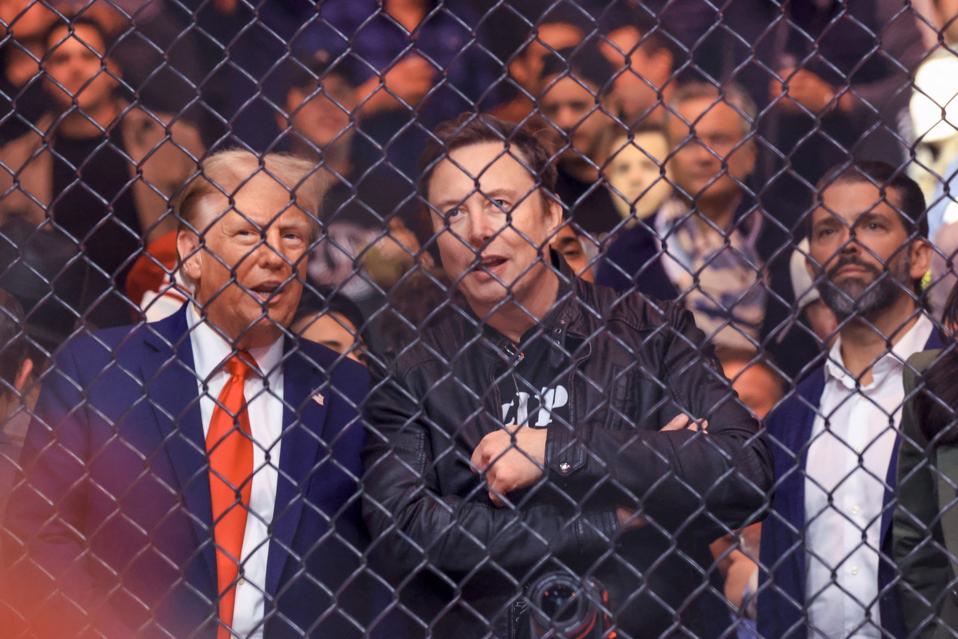As the shoe and apparel brand celebrates its 60th anniversary, here’s a look back at a 1981 Forbes profile of Nike’s billionaire cofounder.

Just Did It: Nike cofounder Phil Knight revolutionized the sneaker business with a simple philosophy, “Put ’em on the pros.”
Mark Peterson/Corbis via Getty Images
Beginning with John McEnroe in 1978, athletes like Michael Jordan and Tiger Woods have made the brand synonymous with success on and off the field. Knight (who has no relation to this reporter) has seen his net worth rise to an estimated $40 billion and landed at No. 18 on 2023’s Forbes 400 ranking of the wealthiest Americans.
Inevitable as it may seem now, though, Nike’s ascent was by no means preordained. The company began with modest aspirations, as a distributor of Japanese-made Onitsuka Tiger shoes in the United States. But marketing masterstrokes in the 1970s and early ’80s helped Nike eclipse more established sneaker brands like Converse—a company it eventually acquired, in 2003.
Knight and Nike first appeared in the pages of Forbes in the midst of that surge, on November 23, 1981. Here is that profile, republished in full.
Related
Nike’s Fast Track
By John Merwin
Sunday, Oct. 25. This will be one fine day for Philip H. Knight, the 43-year-old cofounder and chairman of Nike Inc., the athletic-shoe company. Knight positions himself in front of the tube. Morning: turn on ABC. Alberto Salazar breaks the world marathon record in New York. Early afternoon: switch to NBC. Dallas Cowboys defensive line rolls back Miami in a 28-27 come-from-behind cliff-hanger. Later: back to ABC for the World Series. Dodgers stun Yankees 2-1 with a late-inning home run by catcher Steve Yeager.
Not that Knight, a former University of Oregon track star, gets a racing pulse from watching Salazar, the Dallas Cowboys front four or the Dodgers. His heart leaps for television exposure of Nike shoes, worn conspicuously by Salazar, the entire Dallas defensive line and a half-dozen Dodgers, including hero Yeager.
Knight’s publicity strategy has paid off in spades. Perhaps 100 million viewers have seen parts of these three TV sports events. Millions more will see pictures in the following day’s newspaper or in magazines such as Sports Illustrated. All for 3% of Nike’s sales, which the company dedicates to promotions, including signing professional athletes to wear Nikes.
“A full-page ad in Sports Illustrated costs about $50,000,” gloats Knight, sporting a sleek pair of silver Nikes himself. “But how about the cover of Sports Illustrated? You can’t buy the cover.” Maybe you can’t, but Nike can. “The secret to business,” explains Knight, “is to build the kind of shoe professional athletes will wear, then put them on the pros. The rest of the market will follow.”
Related
It’s called trickle-down fashion. Pro athletes are seen wearing Nike (pronounced NIGH-KEE and named for the Greek goddess of victory). Amateur athletes follow, wishing to emulate their heroes. The base broadens to teenagers, children and even otherwise unathletic suburbanites who are susceptible to health-fashion chic.
Nike has scores of athletes on contract, including tennis star John McEnroe and baseball’s Nolan Ryan, at terms ranging from a few pairs of sneakers and modest amounts of cash up to lofty sums—Knight won’t say how much—and a percentage of shoe sales. It works. Oh, how it works.
Beaverton, Ore.-based Nike’s sales and profit parabola looks like Mt. McKinley while return on equity has ranged from 45% to 85% a year. Five years ago, revenues were $29 million. In fiscal 1981, ended May 31, they were $458 million, and analysts are pegging this year at $650 million. Per-share net in the same periods was 9 cents, $1.52, and this year an estimated $2.20. Sales jumped 72% in fiscal 1982’s first quarter while profits nearly doubled to 80 cents a share.
Nike, an American firm in a field that could have been foreign-dominated, has made it look as easy as high-jumping on the moon because of Knight’s entrepreneurial verve. While others in Stanford’s 1963 M.B.A. program wrote papers about electronics, Knight whipped out one on track shoes. He figured the Japanese, with low-cost labor, could overwhelm European-dominated running-shoe manufacturing if they tried. After graduation, Knight himself imported a few hundred pairs of Japanese-made Tiger running shoes. He formed a partnership with his Oregon track coach, William J. Bowerman, who for years had been tinkering with track-shoe design. While Knight worked by day as a Coopers & Lybrand accountant, at night and on weekends he peddled Japanese-made track shoes, mostly to school athletic teams.
The rest is history. In 1972, Knight, by then working full time, and Bowerman began contracting out manufacturing of their designs to Far East factories. The growth, buoyed by the U.S. health craze, hasn’t stopped since. Nike went public last year, leaving Knight with 46% of the company, worth $215 million. Bowerman, 70, sold off most of his stock earlier, and today owns 2% of the company—a mere $9.5 million worth.
Demand for Nike shoes has been so high that 60% of its customers advance order to get a break on price and payment terms, and more important, a guarantee of delivery six months later. That saves Nike, with 85% of its shoes coming through its Far East pipeline, production scheduling headaches and holds down inventory costs. Nike has also held investment in plant and equipment to a bare minimum by farming out manufacturing. Knight supports his better than half-billion-dollar sales volume on an equity base of $97 million.
Nike is moving quickly into children’s shoes and into apparel—anything from prominently labeled jogging shorts to athletic bags—where German rival Adidas derives an estimated 40% of its sales. At Nike, apparel represents only 8% of sales. But Knight is shooting for 30% within five years while also invading West European shoe markets, which he figures are as large as domestic ones.
How long can this Nike craze last? The intensity of it is surprising. Forbes asked 150 junior high students in a middle-class Dallas neighborhood, Lake Highlands, what their favorite athletic shoe was. Without exception, they listed Nike first, often citing its status as an expensive “designer” shoe.
Knight is no amateur. He recognizes that fashion’s fervor will cool if you don’t keep a fire under it. As soon as one of Nike’s 140 basic models shows signs of petering out, Knight replaces it. And sometimes his friends in the media lend a hand.
“A few years ago, we had one shoe which was slipping,” Knight recalls. “Then one night Farrah Fawcett appeared on Charlie’s Angels wearing this particular shoe in closeups, as she skateboarded during an escape scene. Within a few weeks, sales of that shoe doubled.” Funny part is, she wasn’t even on contract. She must have seen John McEnroe wearing them on TV.
This article was first published on forbes.com and all figures are in USD.
Look back on the week that was with hand-picked articles from Australia and around the world. Sign up to the Forbes Australia newsletter here or become a member here.




